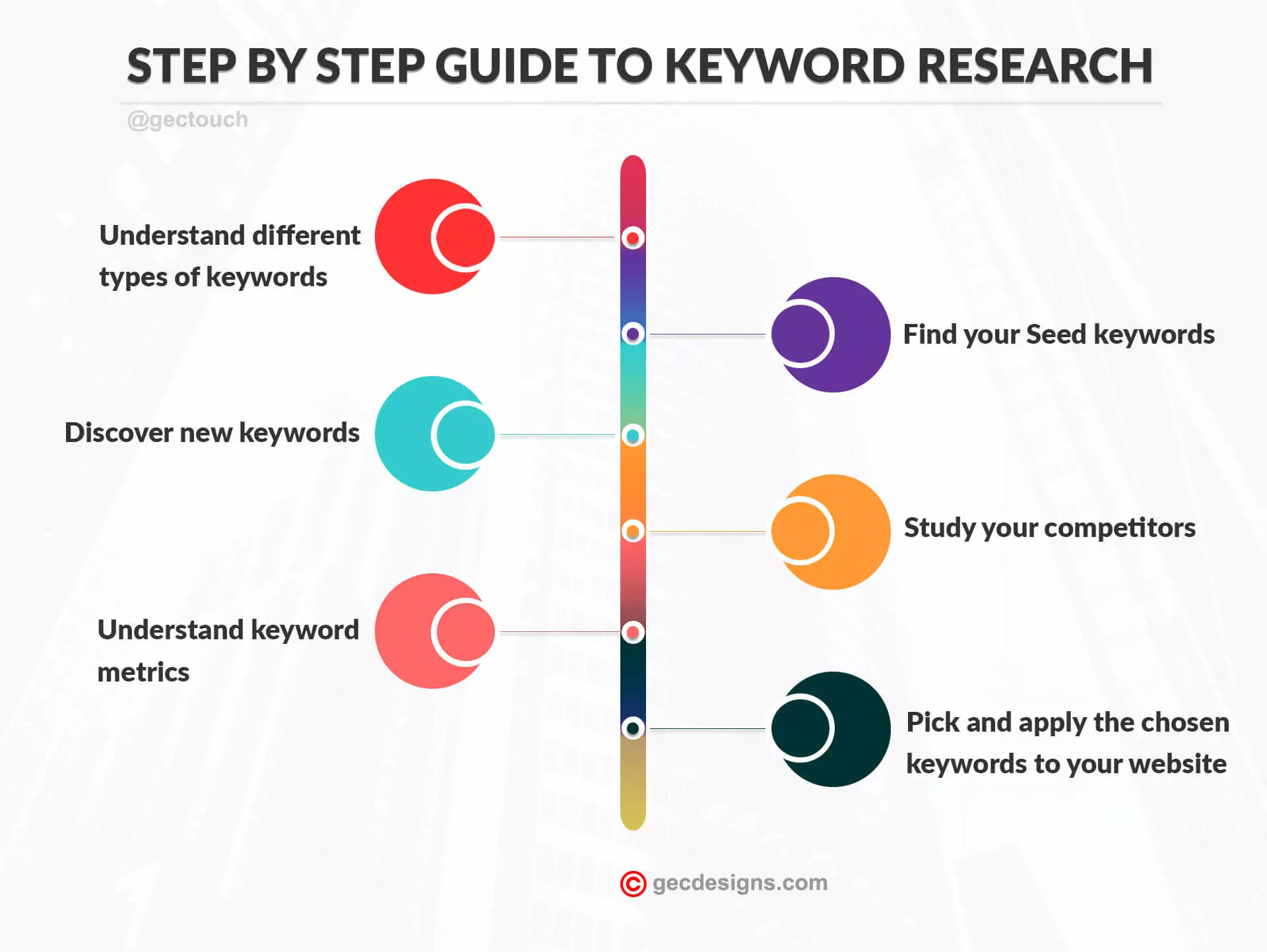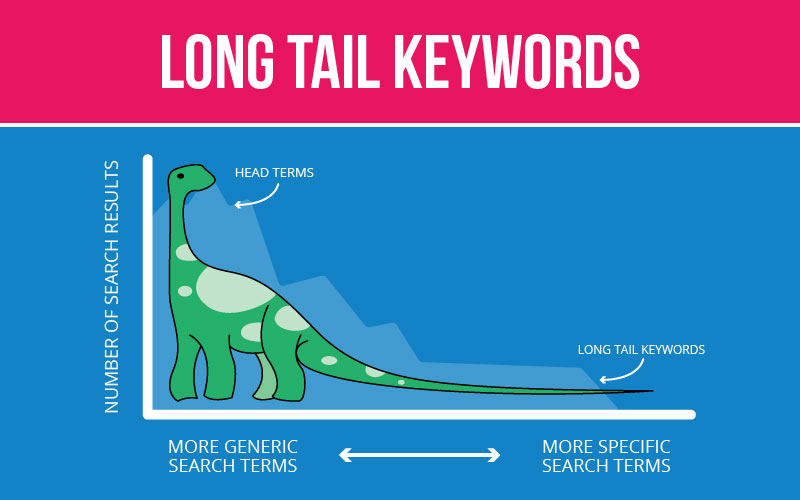Why Keyword Research is Crucial for Niche Success
Conducting thorough keyword research is essential for understanding your target audience, identifying market gaps, and creating content that resonates with your niche. By understanding what your audience is searching for online, you can tailor your content to meet their needs, stay ahead of the competition, and drive more traffic to your website. Effective keyword research enables you to identify the most relevant and high-traffic keywords, phrases, and topics that your target audience is searching for, allowing you to create content that addresses their pain points, interests, and motivations.
In today’s digital landscape, keyword research is more important than ever. With millions of websites and blogs competing for attention, it’s crucial to have a solid understanding of your niche and the keywords that drive traffic and conversions. By incorporating keyword research into your content strategy, you can increase your online visibility, drive more qualified leads, and ultimately, boost your bottom line. Whether you’re a seasoned marketer or just starting out, learning how to research keywords for a niche is a critical skill that can help you succeed in the online marketplace.
So, how do you get started with keyword research? The first step is to identify your niche and understand what your target audience is searching for online. This involves brainstorming a list of potential keywords, phrases, and topics that are relevant to your niche. From there, you can use online tools like Google Keyword Planner, Ahrefs, and SEMrush to analyze keyword metrics, such as search volume, competition, and cost-per-click (CPC). By analyzing these metrics, you can identify the most profitable keywords and phrases that will drive traffic and conversions to your website.
By incorporating keyword research into your content strategy, you can create content that resonates with your target audience, drives more traffic to your website, and ultimately, boosts your online success. Whether you’re looking to increase your online visibility, drive more qualified leads, or simply create content that resonates with your audience, learning how to research keywords for a niche is a critical skill that can help you achieve your goals.
Understanding Your Niche: Identifying Relevant Topics and Themes
To effectively research keywords for a niche, it’s essential to have a deep understanding of your target audience and the topics that resonate with them. This involves identifying the pain points, interests, and motivations that drive their online behavior. By understanding what makes your audience tick, you can create content that addresses their needs and concerns, increasing the likelihood of attracting and engaging with them.
So, how do you identify relevant topics and themes that your target audience is searching for online? One approach is to use online tools like Google Trends, Keyword Planner, and social media listening tools to analyze what’s currently trending in your niche. You can also conduct surveys, polls, and focus groups to gather feedback from your target audience and gain a deeper understanding of their needs and concerns.
Another approach is to analyze your competitors’ content and identify gaps in the market that you can fill. This involves researching your competitors’ websites, blogs, and social media channels to see what topics they’re covering and how they’re engaging with their audience. By identifying areas where your competitors are falling short, you can create content that addresses these gaps and establishes your brand as a thought leader in your niche.
Additionally, you can use techniques like mind mapping and keyword clustering to brainstorm ideas and identify relevant topics and themes. Mind mapping involves creating a visual map of ideas and concepts related to your niche, while keyword clustering involves grouping related keywords and phrases together to identify patterns and trends.
By using these techniques and tools, you can gain a deeper understanding of your target audience and the topics that resonate with them. This will enable you to create content that addresses their needs and concerns, increasing the likelihood of attracting and engaging with them. Remember, understanding your niche is an ongoing process that requires continuous research and analysis. By staying up-to-date with the latest trends and topics in your niche, you can stay ahead of the competition and drive more traffic to your website.
Brainstorming Keywords: Techniques for Generating Ideas
Brainstorming keywords is a crucial step in the keyword research process. It involves generating a list of potential keywords and phrases that are relevant to your niche and target audience. There are several techniques you can use to brainstorm keywords, including mind mapping, keyword clustering, and using online tools like Google Autocomplete and Keyword Planner.
Mind mapping is a visual technique that involves creating a map of ideas and concepts related to your niche. Start by writing down your niche or topic in the center of a piece of paper, and then brainstorm related ideas and keywords around it. Use different colors, symbols, and images to make the map more visually appealing and to help you generate more ideas.
Keyword clustering is another technique that involves grouping related keywords and phrases together. Start by brainstorming a list of keywords related to your niche, and then group them into clusters based on their relevance and similarity. For example, if your niche is fitness, you might have clusters for keywords related to weight loss, muscle building, and nutrition.
Google Autocomplete is a powerful tool that can help you generate keyword ideas. Simply type in a keyword or phrase related to your niche, and Google will suggest additional keywords and phrases that people are searching for. You can also use the Google Keyword Planner tool to generate keyword ideas and get an estimate of their search volume and competition.
Another technique for brainstorming keywords is to use online tools like Ahrefs and SEMrush. These tools provide a wealth of information on keywords, including their search volume, competition, and cost-per-click (CPC). You can use these tools to generate keyword ideas, analyze your competitors’ keywords, and identify gaps in the market that you can fill.
By using these techniques, you can generate a list of potential keywords and phrases that are relevant to your niche and target audience. Remember to always keep your target audience in mind when brainstorming keywords, and to focus on keywords that are relevant and specific to your niche.
Once you have a list of potential keywords, you can start analyzing their metrics to determine which ones are the most profitable and relevant to your niche. This involves using tools like Google Keyword Planner, Ahrefs, and SEMrush to analyze the search volume, competition, and CPC of your keywords.
Analyzing Keyword Metrics: Understanding Search Volume, Competition, and Cost
Once you have a list of potential keywords, it’s essential to analyze their metrics to determine which ones are the most profitable and relevant to your niche. This involves using tools like Google Keyword Planner, Ahrefs, and SEMrush to analyze the search volume, competition, and cost-per-click (CPC) of your keywords.
Search volume is a critical metric that indicates the number of people searching for a particular keyword or phrase. A high search volume indicates a high demand for the keyword, while a low search volume indicates a low demand. When analyzing search volume, it’s essential to consider the average monthly searches, as well as the trends and seasonality of the keyword.
Competition is another crucial metric that indicates the number of websites competing for a particular keyword or phrase. A high competition indicates a high number of websites competing for the keyword, while a low competition indicates a low number of websites competing for the keyword. When analyzing competition, it’s essential to consider the number of websites competing for the keyword, as well as the strength and relevance of their content.
Cost-per-click (CPC) is a metric that indicates the cost of advertising for a particular keyword or phrase. A high CPC indicates a high cost of advertising, while a low CPC indicates a low cost of advertising. When analyzing CPC, it’s essential to consider the average CPC, as well as the trends and seasonality of the keyword.
By analyzing these metrics, you can determine which keywords are the most profitable and relevant to your niche. For example, if you’re targeting a keyword with a high search volume, low competition, and low CPC, it’s likely to be a profitable keyword. On the other hand, if you’re targeting a keyword with a low search volume, high competition, and high CPC, it’s likely to be an unprofitable keyword.
When analyzing keyword metrics, it’s also essential to consider the relevance and specificity of the keyword. A keyword that is highly relevant and specific to your niche is more likely to drive targeted traffic and conversions. For example, if you’re targeting a keyword like “fitness tips for women over 40,” it’s likely to be more relevant and specific to your niche than a keyword like “fitness tips.”
By using tools like Google Keyword Planner, Ahrefs, and SEMrush, you can analyze keyword metrics and determine which keywords are the most profitable and relevant to your niche. This will help you create a comprehensive keyword research strategy that drives traffic, engagement, and conversions.
Long-Tail Keywords: Targeting Specific Phrases for Better Results
Long-tail keywords are specific phrases that have lower search volumes, but are also less competitive and more targeted to your niche. By targeting long-tail keywords, you can increase your chances of ranking higher in search engine results pages (SERPs) and driving more targeted traffic to your website.
Long-tail keywords are typically longer phrases that are more specific to your niche. For example, instead of targeting the keyword “fitness,” you could target the long-tail keyword “fitness tips for women over 40.” This keyword is more specific to your niche and has a lower search volume, but it’s also less competitive and more targeted to your audience.
Targeting long-tail keywords can also help you to increase your conversion rates. By targeting specific phrases that are more relevant to your niche, you can attract more targeted traffic to your website and increase the chances of converting them into customers.
Another benefit of targeting long-tail keywords is that they can help you to rank higher in SERPs. By targeting specific phrases that are less competitive, you can increase your chances of ranking higher in search engine results pages and driving more targeted traffic to your website.
Examples of long-tail keywords include:
- fitness tips for women over 40
- how to lose weight quickly and safely
- best exercises for building muscle
- healthy meal planning for busy professionals
By incorporating long-tail keywords into your content strategy, you can increase your chances of ranking higher in SERPs, driving more targeted traffic to your website, and increasing your conversion rates.
When targeting long-tail keywords, it’s essential to remember to optimize your content for multiple keywords and phrases. This can help you to increase your chances of ranking higher in SERPs and driving more targeted traffic to your website.
By using tools like Google Keyword Planner, Ahrefs, and SEMrush, you can identify long-tail keywords that are relevant to your niche and optimize your content for them. This can help you to increase your chances of ranking higher in SERPs and driving more targeted traffic to your website.
Keyword Research Tools: A Review of the Best Options
When it comes to keyword research, having the right tools can make all the difference. In this section, we’ll review some of the best keyword research tools available, including Google Keyword Planner, Ahrefs, SEMrush, and Moz Keyword Explorer.
Google Keyword Planner is a free tool that allows you to research keywords and get an estimate of their search volume and competition. It’s a great tool for beginners, but it has some limitations, such as limited data and no ability to analyze competitor keywords.
Ahrefs is a comprehensive keyword research tool that offers a wide range of features, including keyword suggestions, competitor analysis, and content optimization. It’s a paid tool, but it’s worth the investment if you’re serious about keyword research.
SEMrush is another popular keyword research tool that offers a wide range of features, including keyword suggestions, competitor analysis, and technical SEO audits. It’s a paid tool, but it’s worth the investment if you’re serious about keyword research.
Moz Keyword Explorer is a keyword research tool that offers a wide range of features, including keyword suggestions, competitor analysis, and content optimization. It’s a paid tool, but it’s worth the investment if you’re serious about keyword research.
When choosing a keyword research tool, it’s essential to consider your needs and budget. If you’re just starting out, Google Keyword Planner may be a good option. However, if you’re serious about keyword research, Ahrefs, SEMrush, or Moz Keyword Explorer may be a better option.
Here are some key features to consider when choosing a keyword research tool:
- Keyword suggestions: Look for a tool that offers a wide range of keyword suggestions, including long-tail keywords and phrases.
- Competitor analysis: Look for a tool that allows you to analyze your competitors’ keywords and content.
- Content optimization: Look for a tool that offers content optimization features, such as keyword density analysis and content suggestions.
- Technical SEO audits: Look for a tool that offers technical SEO audits, such as website crawl and technical SEO analysis.
By considering these features and choosing the right keyword research tool, you can take your keyword research to the next level and drive more traffic, engagement, and conversions to your website.
Refining Your Keyword List: Tips for Prioritizing and Optimizing
Once you have a list of potential keywords, it’s essential to refine it by prioritizing and optimizing your keywords. This involves analyzing your keywords based on their relevance, search volume, and competition, and selecting the most profitable ones to target.
Here are some tips for prioritizing and optimizing your keyword list:
- Prioritize keywords based on relevance: Focus on keywords that are most relevant to your niche and target audience.
- Analyze search volume: Choose keywords with a high search volume to increase your chances of driving more traffic to your website.
- Assess competition: Select keywords with low competition to increase your chances of ranking higher in search engine results pages (SERPs).
- Optimize for multiple keywords: Use a combination of keywords and phrases to optimize your content and increase your chances of ranking higher in SERPs.
When optimizing your content for multiple keywords, it’s essential to use a natural and conversational tone. Avoid keyword stuffing, which can lead to penalties from search engines.
Here are some tips for optimizing your content for multiple keywords:
- Use keyword variations: Use different variations of your target keywords throughout your content to increase your chances of ranking higher in SERPs.
- Incorporate long-tail keywords: Use long-tail keywords to target specific phrases and increase your chances of ranking higher in SERPs.
- Use keyword synonyms: Use synonyms of your target keywords to increase your chances of ranking higher in SERPs.
By refining your keyword list and optimizing your content for multiple keywords, you can increase your chances of driving more traffic, engagement, and conversions to your website.
Remember, keyword research is an ongoing process that requires continuous refinement and optimization. By staying up-to-date with the latest trends and best practices, you can stay ahead of the competition and drive more success to your website.
Putting it All Together: Creating a Keyword Research Strategy
By now, you should have a solid understanding of how to research keywords for a niche. It’s time to put it all together and create a comprehensive keyword research strategy that drives traffic, engagement, and conversions to your website.
A successful keyword research strategy involves several key components, including:
- Understanding your niche and target audience
- Brainstorming keywords and phrases
- Analyzing keyword metrics and competition
- Targeting long-tail keywords and phrases
- Refining your keyword list and optimizing your content
By incorporating these components into your keyword research strategy, you can increase your chances of driving more traffic, engagement, and conversions to your website.
Here’s an example of a successful keyword research strategy:
Let’s say you’re a fitness blogger who specializes in weight loss tips for women over 40. Your target audience is women in this age group who are looking for healthy and effective ways to lose weight.
Using the techniques outlined in this article, you brainstorm a list of potential keywords and phrases, including:
- weight loss tips for women over 40
- healthy weight loss for women
- weight loss exercises for women over 40
- weight loss diet for women
You then analyze the keyword metrics and competition using tools like Google Keyword Planner, Ahrefs, and SEMrush. You identify the most profitable keywords and phrases and refine your list accordingly.
Next, you optimize your content for multiple keywords and phrases, including long-tail keywords and phrases. You create high-quality, engaging content that resonates with your target audience and drives more traffic, engagement, and conversions to your website.
By following this example, you can create a comprehensive keyword research strategy that drives traffic, engagement, and conversions to your website.
Remember, keyword research is an ongoing process that requires continuous refinement and optimization. By staying up-to-date with the latest trends and best practices, you can stay ahead of the competition and drive more success to your website.








